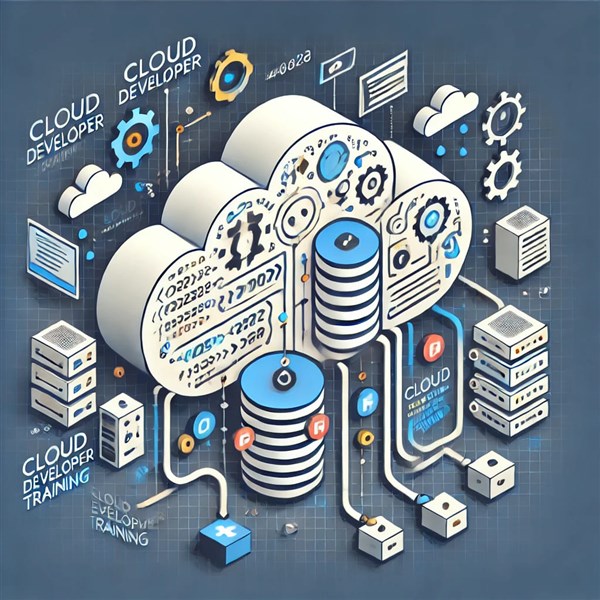We're open through the holidays to support your upskilling goals — book your session today!
We're open through the holidays to support your upskilling goals — book your session today!
Unable to find what you're searching for?
We're here to help you find it
The world is going cloud-first — and developers are right in the middle of this transformation. From SaaS startups to enterprise-level apps, the demand for cloud-native development has skyrocketed.
But as many developers quickly realize, cloud development isn’t just “web development on a bigger server.” It introduces new paradigms, architectures, cost models, and security responsibilities. And with those come opportunities to excel — or make critical mistakes.
That’s where cloud developer training proves its worth.
In this blog, we’ll explore the 10 most common mistakes developers make when working in the cloud — and how a proper cloud developer training program helps you avoid them. Whether you're building with AWS, Azure, or Google Cloud, these insights can save you time, money, and frustration.
❌ The Problem:
Many beginner developers unknowingly embed AWS keys, passwords, or API tokens directly into their code. This exposes sensitive data and increases the risk of breaches — especially when code is pushed to public repositories.
✅ After Training:
You’ll learn best practices for secret management, including:
❌ The Problem:
New developers often choose the biggest virtual machines or forget to configure auto-scaling and idle-time shutdowns, leading to bloated bills.
✅ After Training:
You’ll gain a strong grasp of cost optimization techniques, such as:
❌ The Problem:
Many developers migrate traditional applications to the cloud without rethinking the architecture, missing out on scalability, resilience, and automation benefits.
✅ After Training:
You’ll understand the 12-Factor App model, microservices, and event-driven architectures. You’ll learn how to:
❌ The Problem:
Assigning broad, admin-level permissions to every user or service can result in significant security risks.
✅ After Training:
You’ll apply the principle of least privilege and use IAM best practices such as:
❌ The Problem:
Without proper observability, you won’t know what’s going wrong until users start complaining. This leads to long debugging cycles and poor user experiences.
✅ After Training:
You’ll learn to implement centralized logging and monitoring using:
❌ The Problem:
Manually provisioning cloud resources leads to inconsistency and lack of repeatability — especially across environments (dev, staging, prod).
✅ After Training:
You’ll master tools like Terraform, AWS CloudFormation, or Azure Bicep, and learn to:
❌ The Problem:
Some developers assume cloud providers handle all security, not realizing they’re responsible for application-level, data-level, and sometimes network-level security.
✅ After Training:
You’ll learn the Shared Responsibility Model, and how to:
❌ The Problem:
Relying on a single region or availability zone means your application could go down if that zone fails.
✅ After Training:
You’ll design for resilience and redundancy, including:
❌ The Problem:
Manually deploying code to cloud environments is not only slow but error-prone — especially when teams scale.
✅ After Training:
You’ll integrate Continuous Integration and Continuous Deployment (CI/CD) using tools like:
❌ The Problem:
Cloud platforms evolve rapidly. Developers who don’t stay updated miss out on new services, optimizations, and cost-saving features.
✅ After Training:
You’ll know how to keep pace by:
Cloud developer training is ideal for:
|
Area |
Benefits Gained |
|---|---|
|
Security |
Fewer vulnerabilities, better credential management |
|
Cost Efficiency |
Reduced cloud spend through better provisioning |
|
Deployment Speed |
Faster, automated releases with fewer manual steps |
|
Reliability |
Highly available, fault-tolerant systems |
|
Scalability |
Cloud-native design that supports rapid growth |
🧭 Final Thoughts
Cloud development opens up incredible possibilities for scale, agility, and innovation — but it also introduces new complexity. Without proper training, developers risk repeating on-premises mistakes in the cloud and creating systems that are fragile, costly, and insecure.
The good news? Every one of those pitfalls is avoidable — with the right cloud developer training.
You’ll not only learn how to write better code for the cloud, but you’ll also understand how to build secure, scalable, and efficient applications that thrive in the cloud environment.
✅ Final Takeaway:
Whether you’re just getting started or looking to level up your cloud development game, cloud developer training equips you with the mindset, tools, and technical knowledge to succeed — and most importantly, to avoid the costly mistakes many others make.
In conclusion, these common mistakes can be easily avoided with proper Cloud Developer training. Koenig Solutions, a leading IT training company, offers comprehensive Cloud Developer training courses that equip professionals with the knowledge and skills they need to excel in the cloud computing field.

Aarav Goel has top education industry knowledge with 4 years of experience. Being a passionate blogger also does blogging on the technology niche.










